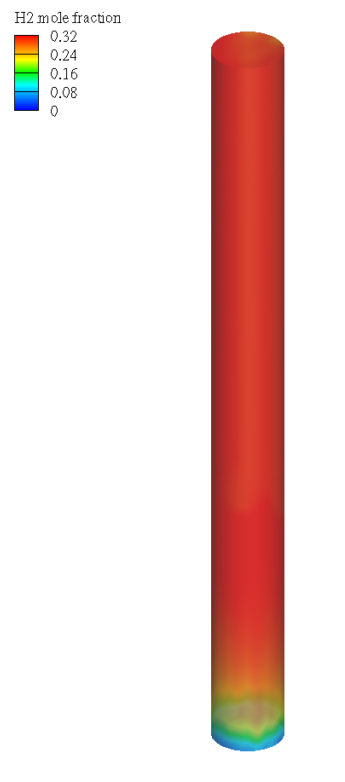
Application Model Overview
Dry reforming of methane (DRM) offers a way to reduce greenhouse gas emissions by converting methane (CH4) and carbon dioxide (CO2), two key biogas components, into valuable syngas (H2 + CO). Syngas can be used as an alternative energy source, reducing dependency on fossil fuels.
This application demonstrates the power of Barracuda Virtual Reactor in simulating DRM within a fluidized bed reactor. By modeling hydrogen production from biogas, Barracuda helps visualize how methane and CO2 are converted into syngas using a catalyst, ensuring efficiency in the reactor setup and operation.
Barracuda’s features, such as compressible isothermal flow and volumetric chemistry, make it an essential tool for tackling complex chemical processes like DRM. The software supports detailed reaction modeling while ensuring accurate predictions of gas conversions—offering industries a reliable pathway to reduce emissions and optimize resource use.
Additional Resources
- View reaction kinetics*
- Model download and instructions*
- Post-processing instructions*
- P. Ugarte, P. Durán, J. Lasobras, J. Soler, M. Menéndez, J. Herguido, “Dry reforming of biogas in fluidized bed: Process intensification”, International Journal of Hydrogen Energy, Volume 42, Issue 19.
- Benguerba, Y., Virginie, M., Dumas, C. et al. “Computational fluid dynamics study of the dry reforming of methane over Ni/Al2O3 catalyst in a membrane reactor. Coke deposition”. Kinetic Catalysis, Volume 58, No 3.
- Benguerba, Y., Virginie, M., Dumas, C. et al. “Modelling of methane dry reforming over Ni/Al2O3 catalyst in a fixed-bed catalytic reactor”. Reaction Kinetics, Mechanisms, and Catalysis, Volume 114.
* Support site login required. Contact us for more information on access to our customer support portal.

